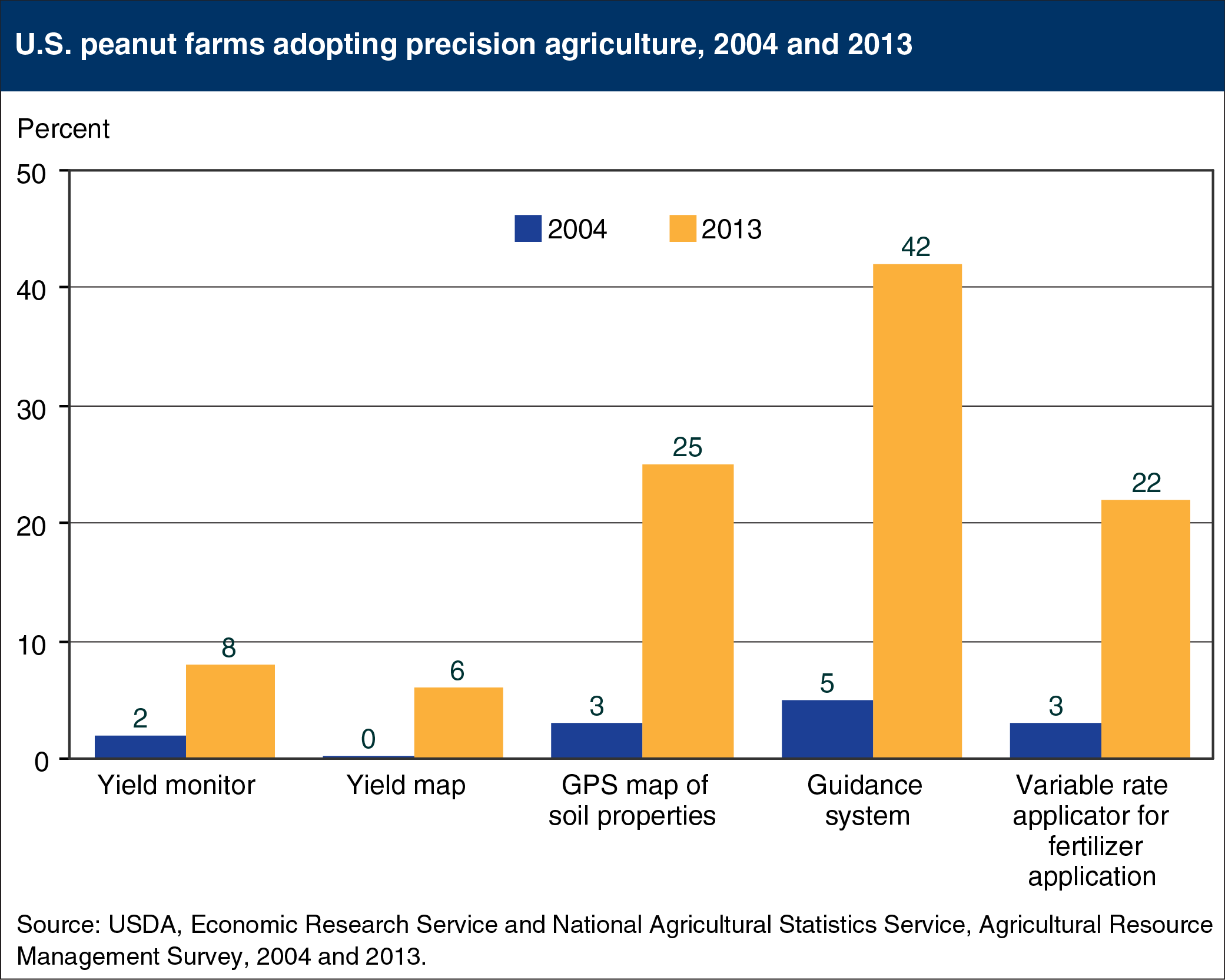Peanut farms are adopting precision agriculture technologies
- by James M. MacDonald
- 5/18/2015

Precision agriculture is a set of practices used to manage fields by assessing variations in nutrient needs, soil qualities, and pest pressures. In 2013-14, USDA conducted the latest Agricultural Resource Management Survey (ARMS) of U.S. peanut growers, interviewing farmers about production practices, resource use, and finances. Some technologies have been rapidly adopted; in particular, 42 percent of peanut farms used auto-steer or guidance systems in 2013, up from 5 percent in 2006. These systems can reduce stress for operators and limit the over-application of inputs on field edges. Yield monitors and yield maps, with essentially no usage in 2006, were used on 8 and 6 percent of farms, respectively, in 2013. With these technologies, monitors can identify within-field yield variations so farmers can adjust inputs and practices accordingly. The use of variable rate application, which has increased from 3 to 22 percent of farms, allows for the adjustment of fertilizer application over a field so that fertilizer can be applied where and when it is needed, thus reducing costs and being more environmentally friendly. This chart is found in the joint ERS/National Agricultural Statistics Service (NASS) report, 2013 ARMS—Peanut Industry Highlights, based on ARMS Farm Financial and Crop Production Practices data.

